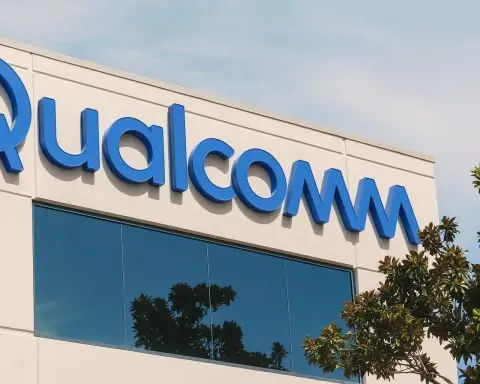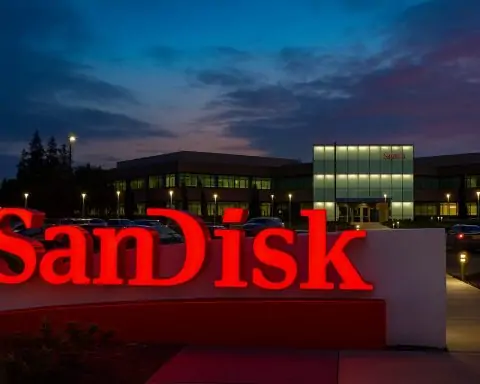- Major EV layoffs: General Motors is cutting roughly 1,700 jobs as it scales back electric vehicle (EV) production amid weakening demand [1]. The cuts include about 1,200 workers at GM’s Detroit-Hamtramck “Factory Zero” assembly plant (trimming to one shift) and 550 at an Ultium Cells battery plant in Ohio. Hundreds more workers (850 in Ohio, 700 in Tennessee) will be temporarily furloughed as GM pauses battery cell output for upgrades [2].
- EV slowdown & policy rollback: GM says the pullback is “in response to slower near-term EV adoption and an evolving regulatory environment” [3]. EV sales have sputtered after a key $7,500 federal tax credit expired in September and the Trump administration relaxed emissions rules, further dampening demand [4]. CEO Mary Barra acknowledged “near-term EV adoption will be lower than planned” as the company recalibrates its strategy [5].
- Strategy pivot and charges: The automaker took a $1.6 billion charge this quarter tied to its EV transition [6], writing down unused production capacity. GM is halting battery production at two U.S. plants for about six months starting in January 2026 [7] (targeting a mid-2026 restart after facility upgrades [8]). Despite the cutbacks, executives insist they remain committed to electrification long-term – but must cut costs now. “We continue to believe that there is a strong future for electric vehicles…and we’ve got a great portfolio to be competitive, but we do have some structural changes that we need…to make sure that we lower the cost of producing those vehicles,” GM CFO Paul Jacobson told CNBC [9].
- Investors react positively: Wall Street appears to approve of GM’s belt-tightening. GM stock surged 15% in a single day after the company’s late-October earnings report, its biggest one-day gain in years [10]. Shares hit a 52-week high around $37 and remain up over 35% year-to-date [11], far outpacing the broader market. The layoff news barely dented the rally – GM stock was down only 0.3% on the day of the announcement [12] – as investors see the cost cuts as bolstering future profits.
- Analysts upbeat on outlook: Many analysts praise GM’s more measured EV rollout as a “pragmatic” shift to protect margins [13]. Wedbush’s Dan Ives, for example, called GM’s EV recalibration “pragmatic” and margin-friendly, noting the company’s core gasoline SUV/truck business remains “rock solid” [14]. On average, Wall Street maintains a Buy rating on GM – about 15 of 23 analysts rate it Buy or Strong Buy, with a consensus 12-month price target in the high-$60s (roughly 10–15% above current levels) [15]. GM’s raised profit forecast for 2025 (now expecting $12–$13 billion EBIT) [16] has further boosted confidence in its post-restructuring trajectory.
GM Hits Brakes on EV Production, Axes Jobs in Michigan and Ohio
General Motors confirmed sweeping layoffs this week across its electric vehicle operations in Michigan, Ohio and Tennessee, marking one of the auto industry’s starkest retreats from aggressive EV expansion. The company said it will eliminate approximately 1,700 jobs as it idles surplus production capacity. The heart of the cuts is at GM’s Detroit-Hamtramck “Factory Zero” assembly plant – an all-EV factory that builds the Chevy Silverado EV and other electric pickups – which will scale down to a single daily shift starting in January [17]. About 1,200 workers at the Detroit plant will lose their jobs as the site consolidates operations to one shift from two [18]. In addition, GM is indefinitely cutting 550 positions at its Warren, Ohio battery cell facility (operated with partner LG Energy) [19].
The automaker is also implementing temporary furloughs to adjust its production. Roughly 850 hourly workers in Ohio and 700 in Spring Hill, Tennessee will be laid off on a temporary basis while GM pauses battery cell production at those Ultium Cells plants for equipment upgrades [20]. The company said battery manufacturing at the Ohio and Tennessee sites will pause in January 2026 and remain offline for about five months, with operations expected to resume by mid-2026 after retooling [21]. At the Detroit assembly plant, GM plans to idle production until late November and then shut down again over the holidays, re-opening on January 5 with a single shift of about 2,000 workers (down from roughly 3,200 currently) [22]. Layoff notices at the factory will be issued by seniority, in accordance with union agreements, and some displaced workers may have opportunities to transfer elsewhere.
GM stressed that it is “realigning EV capacity” in the face of a demand downturn, but not abandoning its U.S. workforce or long-term electric ambitions. “Despite these changes, GM remains committed to our U.S. manufacturing footprint, and we believe our investments and dedication to flexible operations will make GM more resilient and capable of leading through change,” the company said in a statement to CNBC [23]. In other words, the cuts are portrayed as surgical adjustments rather than a wholesale retreat. Still, for the employees and communities hit by the layoffs – from Detroit’s EV hub to a small town near Youngstown, Ohio – the news is a harsh reminder that the EV transition, once trumpeted as a jobs engine, is encountering speed bumps.
These latest reductions cap off a string of cost-cutting moves by GM in recent days. Earlier in October, the automaker eliminated a few hundred salaried engineering positions at its Warren, MI technical center [24] [25] as part of a restructuring to “strengthen our core…engineering capabilities.” Just this week, GM also confirmed it will shutter an IT innovation center in Georgia, laying off about 325 tech workers by year-end [26] [27]. In total, GM has announced roughly 2,200 U.S. job cuts in the past week alone, spanning white-collar and factory roles. Industry experts say these moves are not entirely unexpected given the current headwinds. “Considering the environmental factors that are impacting General Motors and the entire automotive industry, it’s not surprising to see a restructuring like this. What they need to do is understand what resources they need deployed where to be most effective,” said Janell Townsend, an automotive marketing professor at Oakland University [28], regarding GM’s cost pivots. In short, GM is tightening its belt and redeploying manpower to navigate a rapidly shifting market.
EV Demand Slumps After Tax Credit Axed and Emissions Rules Eased
GM’s retrenchment comes as the once-booming EV market shows signs of cooling, partly due to policy changes. On Sept. 30, a federal incentive that had been propping up EV sales — the $7,500 tax credit for electric vehicle purchases — expired, removing a key enticement for car buyers. That expiration, combined with new signals from Washington, D.C., has poured cold water on near-term EV demand. The Trump administration (which took office in January 2025) has rolled back Obama-era emissions regulations and adopted a more pro-fossil-fuel stance, creating an “evolving regulatory environment” less favorable to EV adoption [29]. GM explicitly cited these policy shifts, noting that the loss of the EV credit “further dampened already-slowing demand” for battery cars [30].
Indeed, GM enjoyed a surge of EV sales in Q3 2025 as consumers rushed to buy before incentives lapsed [31], but orders dropped off once the credit disappeared in October. Industry-wide data suggests the U.S. electric car market could shrink in the near term without subsidies. Ford CEO Jim Farley warned that the EV share of new car sales might drop by half – from around 10% of the market down to just 5% – now that federal tax credits are gone [32]. Automakers say many consumers are pausing on EV purchases in the absence of incentives, especially as gasoline prices retreat from recent highs and interest rates for car loans remain elevated. Mary Barra put it bluntly on GM’s earnings call: “It is now clear that near-term EV adoption will be lower than planned” given the headwinds [33]. As a result, GM is tapping the brakes on aggressive EV expansion – slowing the rollout of new models and scaling back production capacity – until demand better aligns with supply [34].
There is also a psychological factor at play. The auto industry spent the past few years hyping an electric revolution, but the reality of selling EVs profitably has proven tougher than expected. High battery costs, a still-maturing charging infrastructure, and consumer concerns about range and price are all cooling the EV euphoria. The situation has been exacerbated by policy whiplash: the previous Biden administration incentivized EVs, but President Trump’s policies have relieved automakers of strict emissions targets and introduced new tariffs on imported components [35] [36]. Tariffs on batteries and materials are adding thousands of dollars in costs per vehicle for U.S. EV makers [37], pressuring them to either raise prices or accept thinner margins. Without the carrot of tax credits or the stick of stringent regulations, companies like GM are finding that mainstream demand for EVs – especially expensive models like large electric pickups – may take longer to materialize than optimistic forecasts once assumed.
GM Recalibrates Its EV Strategy (But Stays the Course Long-Term)
Facing this new reality, General Motors is pivoting its EV strategy from a focus on rapid volume growth to a focus on profitability and efficiency. The company’s leadership insists that GM is “not abandoning EVs” at all – rather, it’s pacing itself for a longer race. In practical terms, GM is prioritizing its strongest current products (like gas-powered trucks and SUVs that generate hefty profits) and paring back investments in certain electric projects that were not yielding immediate returns. For example, GM recently canceled the planned $800 million BrightDrop electric van project, which was aimed at the commercial delivery market, and took a charge for winding it down [38]. It is also delaying some future EV models and refocusing on hybrid vehicles as a bridge technology. “ICE volumes will remain higher for longer,” Barra noted, referring to internal combustion engine sales, which continue to be robust [39]. In other words, gasoline and hybrid models will fund the transition to an electric future, rather than an all-out EV sprint that drains resources.
One concrete step in GM’s reset is the aforementioned $1.6 billion accounting charge, recorded in Q3, to “unwind excess EV production capacity” [40]. Essentially, GM acknowledged it had overbuilt – or over-committed – for an EV demand level that hasn’t yet materialized. By writing down these assets and slowing production lines, GM aims to avoid oversupply that could lead to unsold inventory or heavy discounting. “By acting swiftly…to address overcapacity, we expect to reduce EV losses in 2026 and beyond,” Barra told shareholders earlier this month [41]. The temporary battery plant shutdowns in Ohio and Tennessee align with this philosophy: better to pause and retool now, improving efficiency, than to keep churning out cells that aren’t needed immediately. GM says the downtime will be used to upgrade equipment and prepare for newer battery chemistries, positioning the plants to ramp up again when EV sales justify it [42].
It’s not just manufacturing that’s being optimized – GM is also trimming personnel in areas where it sees redundancies. The closure of the Georgia IT center, for example, is part of a broader tech restructuring as GM increasingly relies on artificial intelligence and software efficiencies (and perhaps outsourcing) to reduce administrative costs [43] [44]. The engineering layoffs in Michigan similarly targeted a specific subset of design roles (CAD engineers) that GM decided to eliminate to streamline workflows [45]. “What they’re doing is rightsizing their workforce to match the new game plan,” said one Detroit analyst, noting that GM’s recent union contract guarantees higher wages for factory workers over the next few years, making cost discipline elsewhere even more critical.
Throughout all this, GM’s top brass emphasize that their EV vision remains intact – just more “grounded,” in their words. “We continue to believe in an all-electric future,” CFO Paul Jacobson said, but the company must “make sure we lower the cost of producing those vehicles” to ensure that future is financially sustainable [46]. GM is investing in next-generation battery technology (with three new U.S. battery plants opened or under construction) and still plans to introduce several new EVs, including the Chevy Equinox EV and a Cadillac Escalade IQ SUV, over the coming year. However, GM will only scale up production as fast as the market can absorb these models. The company also points out that its flexible factory designs mean many assembly lines can toggle between EVs and combustion models, so slowing EV output now doesn’t condemn a plant to closure – it can be repurposed or ramped up later as needed. This flexibility, GM argues, will “make [us] more resilient and capable of leading through change” despite short-term cutbacks [47].
Stock Soars as Market Sees a “Pragmatic” Course Correction
Investors have largely cheered GM’s shift to realism, rewarding the automaker’s stock even as it announces layoffs and write-offs. GM’s third-quarter earnings report in late October delivered a major surprise to the upside – and a clear message that management is proactively adapting. The company not only beat profit expectations handily (with adjusted Q3 earnings of $2.80 per share vs ~$2.30 anticipated) but also raised its full-year 2025 profit outlook, a rarity in today’s cautious climate [48] [49]. GM told shareholders it now expects $12–$13 billion in adjusted EBIT this year, up from a prior $10–$12.5 billion range. CEO Mary Barra credited relief on two fronts: lower tariff costs than feared (thanks to new government measures offsetting some import fees) and “lighter losses on electric cars” as GM hits the brakes on over-expansion [50]. In fact, by cutting back now, GM anticipates its EV division will stop bleeding red ink sooner. Barra said GM’s actions should trim EV-related losses in 2026 and beyond [51], instilling confidence that the company can pursue electrification and stay profitable.
Wall Street loved what it heard. GM shares rocketed 15% in one day following the earnings news – the stock’s biggest single-day jump since 2017 [52] – and kept climbing to a new 12-month high. As of this week, GM stock is hovering around $70 per share, up from the mid-$40s at the start of the year [53] [54]. Year-to-date the stock has gained roughly 35% [55], dramatically outperforming the broader S&P 500 index. This rally comes even as many high-profile tech and growth stocks have stumbled in 2025, signaling a rotation of investor interest toward “old economy” names that are executing well. One reason is valuation: even after its run-up, GM trades at around 7 times forward earnings [56], a relatively low multiple. That suggests many believe GM’s earnings can hold up (or even grow) under the new strategy – and that the stock still isn’t expensive. “The earnings beat dispels fears of a sharper downturn,” noted one TS2.tech analyst, adding that GM’s North American business in particular is proving resilient [57].
Analysts have been upgrading their forecasts accordingly. Investment firm Wedbush Securities reaffirmed its Outperform (Buy) rating on GM and praised management’s “pragmatic EV recalibration” that prioritizes margins [58] [59]. Wedbush’s Dan Ives set a $65 price target, calling GM’s strategy a “pragmatic” approach to the EV transition that avoids overspending [60]. Other banks are even more bullish: Citigroup and Goldman Sachs have each lifted their 12-month targets into the mid-$70s [61]. In total, the majority of analysts covering GM maintain a positive outlook – with roughly 15 out of 23 rating it a Buy or Strong Buy, according to MarketBeat data [62]. The average price objective now sits in the high-$60s [63], implying modest further upside. While some on Wall Street remain cautious (pointing to ongoing risks like higher labor costs under the new UAW contract, and the cyclical nature of auto sales), the consensus is that GM’s course correction has reduced the downside risk. As Reuters noted, GM’s stock spike after earnings put it “on track for its best day in nearly six years” [64] [65] – a reflection of investors’ relief that the company is proactively managing the EV challenges.
Notably, GM’s stock strength has spilled over to its Detroit rivals. Ford’s shares jumped ~5% in sympathy after GM’s bullish outlook was announced [66], and even Jeep-maker Stellantis saw a smaller bump [67]. The market seems to be giving legacy automakers credit for course-correcting on EVs before losses spiral. “Detroit’s incumbents are navigating the EV transition more cautiously, which investors see as realism rather than pessimism,” observed a Reuters analysis of the recent rally [68] [69]. In short, by slowing down now and focusing on profit over raw EV volume, GM has reassured shareholders that it won’t chase electric dreams off a financial cliff. As a result, GM’s market value has climbed back above $65 billion, and the company continues to return cash to investors (including a modest dividend of about 0.9% yield [70]). If GM can execute its “profit first” strategy and later re-accelerate EV adoption when conditions improve, some analysts argue the stock has room to run further.
Industry Faces an “EV Winter” – GM is Not Alone in Retrenching
GM’s pullback comes amid a broader reality check in the EV sector, affecting both veteran automakers and newer electric-only players. After several years of rapid investment and hype, companies up and down the automotive landscape are dialing down their EV ambitions – at least in the near term – in response to economic and political signals. Ford Motor Co., for instance, recently tapped the brakes on its EV rollout: Ford has postponed construction of a second EV truck plant in Kentucky and is delaying some new EV models, as CEO Jim Farley says the company will expand “as the market dictates” rather than on overly optimistic timelines [71] [72]. Ford has openly acknowledged it is “dialing back” EV spending after the tax credit loss, choosing instead to invest incrementally and focus on its profitable gasoline truck business in the interim [73]. Likewise, Stellantis NV (parent of Chrysler/Jeep) has been cautious. Earlier this year, when President Trump announced sweeping auto import tariffs, Stellantis temporarily laid off 900 U.S. workers and idled two plants abroad to adjust costs [74] [75]. U.S. automakers – including GM and Ford – saw their stocks tumble in reaction to those tariffs [76], underscoring how sensitive the industry is to policy changes. While the tariff situation has since stabilized somewhat (the White House later offered credits to offset a portion of the import fees [77]), the episode reinforced a climate of caution.
Even the high-flying EV startups and pure-play manufacturers are feeling the chill of what some are calling an “EV winter.”Rivian Automotive, a prominent electric truck and SUV maker, just announced 600 layoffs in October – its second round of cuts in two months – to rein in costs amid slowing orders [78]. “The timing is no coincidence: the U.S. EV tax credit expiration at the end of Q3 has created what one analyst called an ‘EV winter’ for many automakers” [79], a TS2.tech report noted, as the post-incentive order lull forces companies to scale back expectations. Rivian’s CEO RJ Scaringe admitted that the market turned “more cautious” virtually overnight, and the company cut its 2025 production forecast by about 10% due to waning subsidies and rising material costs [80]. Similarly, Tesla Inc., the EV market leader, has resorted to aggressive price cuts throughout 2023–2025 to stoke demand for its models, sacrificing some margin to keep sales growing. But with the federal EV credit gone, even Tesla now faces a potential demand dip in late 2025 [81] [82]. Elon Musk’s company recently warned that U.S. deliveries could slow in Q4 absent the $7,500 incentive, and it has pressed the government for more supportive policies.
Amid this turbulence, some automakers that took a more conservative approach to electrification are looking vindicated – at least for now. Toyota, for example, has been slower than Detroit’s Big Three to roll out pure EVs, focusing instead on efficient hybrids. That strategy appears to be paying short-term dividends: Toyota’s U.S. sales (heavy on hybrid RAV4s and Camrys) are booming, and its stock just hit a 12-month high [83] [84]. Industry analysts point out that Toyota, trading at a modest ~10× earnings, offers stability and profits from proven technology while others navigate the choppy EV waters [85]. “Ironically, [Toyota’s] caution is paying off in the short term: with EV sales cooling, [its] focus on efficient gasoline hybrids is keeping sales and profits steady,” notes a Reuters analysis [86]. In Europe, too, companies like BMW and Mercedes have moderated their EV rollout plans after demand in China and other markets underwhelmed expectations [87].
For GM and its Detroit peers, the lesson seems clear: evolution, not revolution. After initially charging ahead with all-out EV programs, U.S. automakers are recalibrating to a more balanced, financially disciplined approach. As one industry insider quipped, “We’re funding our future with today’s profits” [88] – meaning the companies will use the cash from selling trucks and SUVs now to invest in electric and autonomous tech for the future, but on a timeline that matches consumer adoption. GM’s latest moves exemplify this maxim. The company is trimming costs and capacity today, in order to preserve capital and remain profitable as it develops next-gen EV products that can compete on cost and appeal. Crucially, GM and others are also lobbying for policies to help bridge the gap: for instance, automakers are urging lawmakers to consider new incentives or infrastructure investments that could reignite EV sales in the coming years (whether through tax credits, emissions targets, or federal EV charging programs).
In the meantime, GM’s strategic U-turn is being closely watched as a possible template for legacy car companies facing the same dilemma. By slowing down to speed up later, GM is effectively acknowledging that the road to an electric future will be a gradual climb rather than a straight shot. Short-term pain (in the form of layoffs and write-downs) is intended to position the company for long-term gain. Publicly, GM remains steadfast that its “all-electric future” will arrive — just perhaps not as fast as its most ardent champions once hoped. For now, the message to investors and employees alike is one of cautious optimism: GM is pulling back where it must, doubling down where it can win, and waiting for the day the market is ready to truly plug in and go electric at full throttle.
Sources: GM layoff announcements [89] [90]; company and expert statements [91] [92]; Reuters, CNBC and TS2.tech reporting on EV demand and policy changes [93] [94]; financial and stock analysis from Reuters and TS2.tech [95] [96].
References
1. dailyvoice.com, 2. dailyvoice.com, 3. www.reuters.com, 4. www.reuters.com, 5. ts2.tech, 6. www.reuters.com, 7. www.reuters.com, 8. dailyvoice.com, 9. dailyvoice.com, 10. ts2.tech, 11. www.reuters.com, 12. www.reuters.com, 13. ts2.tech, 14. ts2.tech, 15. ts2.tech, 16. ts2.tech, 17. www.reuters.com, 18. dailyvoice.com, 19. dailyvoice.com, 20. dailyvoice.com, 21. dailyvoice.com, 22. dailyvoice.com, 23. dailyvoice.com, 24. www.fox2detroit.com, 25. www.fox2detroit.com, 26. www.11alive.com, 27. www.freep.com, 28. www.fox2detroit.com, 29. www.reuters.com, 30. www.reuters.com, 31. dailyvoice.com, 32. ts2.tech, 33. ts2.tech, 34. ts2.tech, 35. www.reuters.com, 36. www.reuters.com, 37. ts2.tech, 38. ts2.tech, 39. ts2.tech, 40. ts2.tech, 41. ts2.tech, 42. dailyvoice.com, 43. www.cbtnews.com, 44. www.wsbtv.com, 45. www.fox2detroit.com, 46. dailyvoice.com, 47. dailyvoice.com, 48. ts2.tech, 49. ts2.tech, 50. ts2.tech, 51. ts2.tech, 52. ts2.tech, 53. www.reuters.com, 54. www.reuters.com, 55. www.reuters.com, 56. www.reuters.com, 57. ts2.tech, 58. ts2.tech, 59. ts2.tech, 60. ts2.tech, 61. ts2.tech, 62. ts2.tech, 63. ts2.tech, 64. ts2.tech, 65. ts2.tech, 66. ts2.tech, 67. ts2.tech, 68. ts2.tech, 69. ts2.tech, 70. www.reuters.com, 71. ts2.tech, 72. ts2.tech, 73. ts2.tech, 74. www.reuters.com, 75. www.reuters.com, 76. www.reuters.com, 77. ts2.tech, 78. ts2.tech, 79. ts2.tech, 80. ts2.tech, 81. ts2.tech, 82. ts2.tech, 83. ts2.tech, 84. ts2.tech, 85. ts2.tech, 86. ts2.tech, 87. ts2.tech, 88. ts2.tech, 89. dailyvoice.com, 90. www.reuters.com, 91. dailyvoice.com, 92. www.fox2detroit.com, 93. www.reuters.com, 94. ts2.tech, 95. ts2.tech, 96. ts2.tech







